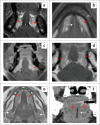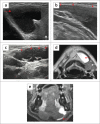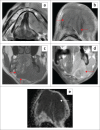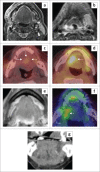Imaging evaluation of the benign and malignant lesions of the floor of the mouth: Pictorial review
- PMID: 37693857
- PMCID: PMC10484149
- DOI: 10.4102/sajr.v27i1.2677
Imaging evaluation of the benign and malignant lesions of the floor of the mouth: Pictorial review
Abstract
The floor of the mouth is an important anatomical region of the oral cavity where primary benign and malignant disease processes can originate or secondary pathologies can extend into adjacent spaces. Knowledge of the anatomy is crucial for accurate localisation of pathology and understanding the spread of disease. The sublingual space is the dominant component of the floor of the mouth, bounded inferiorly by the mylohyoid muscle that separates it from the submandibular space. Imaging is immensely important to characterise and map the extent of disease, considering the fact that the bulk of the disease may be submucosal and not visible on clinical inspection.
Contribution: The floor of the mouth is a complex anatomical region for radiological evaluation. The purpose of this pictorial review is to present an understanding of the relevant anatomy and to demonstrate the role and appropriate application of different imaging modalities. This article highlights the imaging spectrum of a wide range of various benign conditions including normal variants and a variety of malignant lesions at different tumour stages, with an aim to establish the correct diagnosis, avoid misinterpretation and help in treatment planning.
Keywords: CT; MRI; computed tomography; floor of mouth; mylohyoid; sublingual space.
© 2023. The Authors.
Conflict of interest statement
The authors declare that they have no financial or personal relationships that may have inappropriately influenced them in writing this article.
Figures





















References
Publication types
LinkOut - more resources
Full Text Sources
